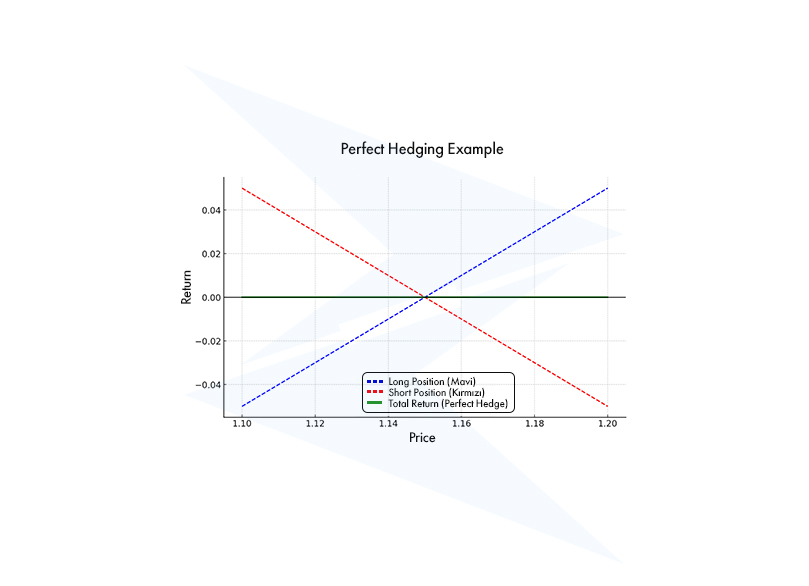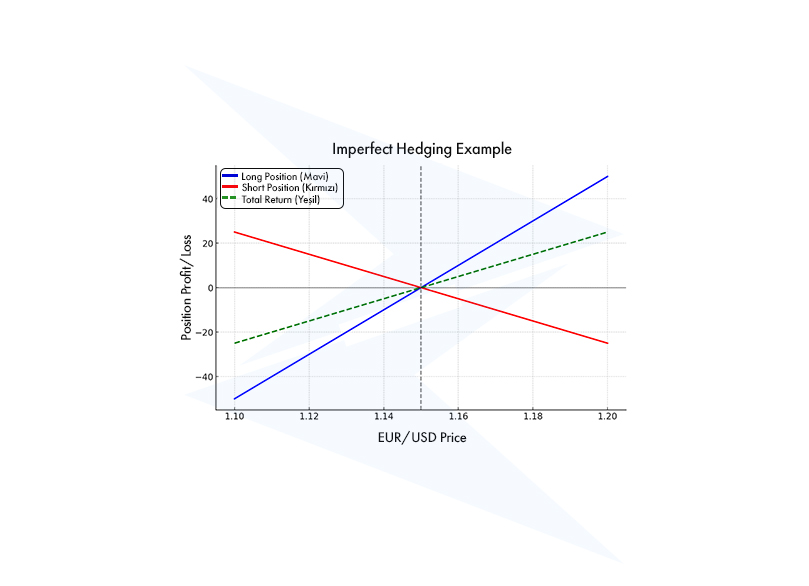
The Forex market, being highly volatile, presents both opportunities and risks for investors. These fluctuations are influenced by various factors such as global economic developments, central bank policies, and geopolitical events. When trading in the Forex market, traders use different hedging strategies to minimize the risks arising from currency fluctuations.
In this article, we will explore effective risk management strategies for Forex traders.
Hedging is a strategy used in financial markets to minimize risks. Investors aim to protect themselves from potential losses by taking an opposite position in a different trade to balance out any possible losses in their current position.
In the Forex market, hedging is a commonly used method to limit losses caused by currency fluctuations. This strategy limits potential losses without completely eliminating the opportunity to gain profits. Traders protect themselves against loss scenarios while maintaining a more balanced portfolio management.
There are various methods that can be used to hedge in the Forex market. Below are some methods that traders can choose based on their risk tolerance, trading strategy, and market conditions:
Perfect Hedging is a strategy used by investors to completely eliminate the risk associated with an existing position. In this strategy, the traders open an equal amount of an opposite position to balance the risks of both positions.
In this way, regardless of the direction in which prices move, the investor's net gain or loss is neutralized. However, this strategy also limits the potential for profit, as the positions completely cancel each other out.
Now let's analyze these points using the following graph:

Imperfect Hedging is a protection strategy that does not fully eliminate risk but limits it to a certain degree. In this strategy, the investor opens an opposite position to hedge the current position, but these positions do not fully neutralize each other.
In Imperfect Hedging, the position typically covers part of the main position, allowing the investor to still profit from market movements. However, full security is not provided with this strategy, and some level of risk continues to be carried.
Now, let's draw and analyze a chart related to Imperfect Hedging:

Options trading is the practice of buying and selling financial contracts that allow traders to speculate on the future price movements of underlying assets within a set timeframe. This flexibility allows traders to limit potential losses while maintaining the opportunity to profit.
When trading Forex options, traders can use two types of options:
A call option gives the investor the right to buy a currency pair at a specific price, but they are not obligated to exercise this right. Traders who believe the market will rise can use this option.
For example, an investor buys a call option on the EUR/USD pair at the 1.2000 level. If the market price rises to 1.2200 at the option's expiration, the trader can exercise the option to buy at the lower price and profit from the difference between 1.2200 and 1.2000.
A call option is a financial contract that allows a trader to profit from the potential rise in the price of an underlying asset by purchasing it at a predetermined price within a specified period. Traders who anticipate a decline in the market favor it.
For instance, at the 1.2000 level, an trader purchases a put option on the EUR/USD pair. The investor can sell at 1.2000 and benefit from the difference between 1.2000 and 1.1800 if the market price drops to 1.1800 at the option's expiration.
Correlation refers to the tendency of two currency pairs to move in parallel or opposite directions. Currency pairs with a positive correlation tend to rise and fall together. Yet, those with a negative correlation move in opposite directions, where one rises as the other falls.
In this strategy, traders aim to limit their risk by taking opposing positions in two currency pairs that are either positively or negatively correlated. For example, EUR/USD and GBP/USD typically have a positive correlation. A trader may open positions in opposite directions in these pairs, seeking to balance losses in one position with gains in the other.
Similarly, EUR/USD and USD/CHF generally have a negative correlation. In this case, traders can open opposite positions in these pairs to hedge against currency fluctuations. This approach doesn't eliminate risk entirely but helps minimize potential losses by balancing opposing positions.
Is Forex hedging profitable?
Forex hedging, when applied correctly, can help limit losses and minimize risk, indirectly contributing to profitability. However, hedging strategies often involve additional costs, so they may not always be directly profitable. The timing and proper application of the strategy are essential.
Why doesn’t hedging always provide full protection?
Hedging strategies may not provide complete protection due to sudden market fluctuations, incorrect position sizing, or unexpected economic developments. Additionally, with strategies like imperfect hedging, the positions do not fully offset each other, leaving some risk exposure.
What should be considered when hedging?
When hedging, attention must be paid to proper position sizing, trading costs, and timing. Additionally, the correlation between currency pairs and market conditions should be considered when planning the strategy. A sound risk management approach enhances the effectiveness of hedging.
Is it sensible to use leverage when hedging?
Using leverage in hedging can increase potential gains but also amplify risks. Leveraged trades, if not managed properly, can lead to significant losses. Therefore, caution should be exercised when using leverage in hedging strategies.
Are hedging strategies suitable for short-term trades?
While hedging strategies are generally more suited to long-term investments, some short-term trades can also benefit from them. Traders who wish to protect against sudden price movements may opt for short-term hedging strategies. However, care must be taken to ensure that the costs do not outweigh the gains in short-term trades.
What are the differences between perfect hedging and imperfect hedging?
Perfect hedging is a strategy that completely eliminates the risk of a position, resulting in neutralized gains and losses. Imperfect hedging, on the other hand, only covers part of the risk, meaning that the investor is still exposed to some degree of risk. In perfect hedging, full protection is achieved, whereas imperfect hedging offers partial protection.
 QuickTrade in cTrader: How to Place Trades Faster
QuickTrade in cTrader: How to Place Trades Faster
QuickTrade is a built-in cTrader feature that allows you to place trades directly from the chart, without opening the full order ticket.
Detail A Practical Guide to cBots on cTrader
A Practical Guide to cBots on cTrader
Discover cBots in the cTrader ecosystem, how they are added and used through cTrader Algo, and what to pay attention to when selecting a strategy.
Detail cTrader Shortcuts: 15 Tips to Upgrade Your Experience
cTrader Shortcuts: 15 Tips to Upgrade Your Experience
This guide highlights 15 practical shortcuts and settings that upgrade your cTrader experience.
DetailThen Join Our Telegram Channel and Subscribe Our Trading Signals Newsletter for Free!
Join Us On Telegram!